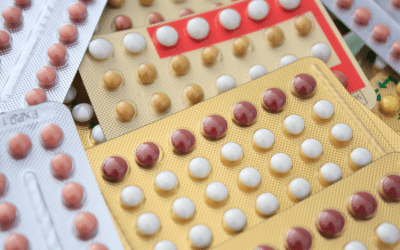What Strategy Against Pain ?
The World Day for the fight against pain was held on Thursday 17th October 2024. It was an opportunity for better apprehending the relationship between human beings and physical suffering and its repercussions.
What is pain?
According to the international association for the study of pain, it is “an unpleasant sensory and emotional experience associated with an actual or potential tissue lesion or described in such terms”. France, through a law dated 4th March 2002 concerning patients’ rights and the quality of the health system, recognises pain relief as a fundamental right for all. Certainly, as such, pain is part of the normal functioning of the human body. Pain is primarily a beneficial warning or even a vital source of information.
If necessary, the alert generates an urgent reflex action which short-circuits the mind, as when a hand is instantly withdrawn on touching a burning object. Pain fosters caution. It also facilitates the prevention of diseases through the messages which it sends. A person who is partially desensitised following an accident or a health problem (e.g.: spina-bifida) must take extra care to compensate for the lack of warning.
A pain is worth communicating to those providing care (relatives, carers). When patients are incapable of expressing themselves – certain multi-disabled people or those at their end of life – their carers must identify any signs of pain which cannot be expressed by words (foetal position, groaning, grimacing and any other non-verbal signs). In addition to the self-evaluation tables, which recognise the subjective and personal nature of the perception of pain, a typology of pain is used by carers: acute pain, chronic pain and pain associated with treatments.
The apprehension of pain accompanies a duplex cultural and technical evolution : on the one hand, at least in western states, enormous progress has been made in the fight against pain, thanks to medicines (not only analgesics, since certain anti-inflammatories and antidepressants also act on the sensation of pain), thanks also to surgical operations (e.g. spinal surgery) but also through “strategies” which are neither medicine based, nor invasive (see below) ; on the other hand, the tolerance of such pain has gradually diminished : it appears more as an avoidable evil, and less as a twist of fate.
There is no point in waiting before treating: the prevention of pain has gradually found its place in the therapeutic tool-kit. However, due to the accessibility of analgesics, it is important not to lose sight of the more “natural” analgesics. Especially as they are often counter-intuitive. Whence the efforts by health authorities, for example, to encourage the mobilisation of affected members. It is common knowledge that back ache tends to tetanise and tense up whereas –cautiously and according to the clinical situation – mobilisation is most often recommended to overcome the pain because “motion is an analgesic”.
Much remains to be done to achieve a widespread diversified and expert culture of pain relief, as certain carers have not yet fully incorporated it in their practice. On their arrival in palliative care, there are patients in great pain who have not benefited from the full range of possibilities: detailed diagnoses, self-evaluation tables, morphine pumps and non-medicinal strategies. Among such strategies there is, relaxation, physiotherapy, hypnosis, understanding, meditation etc.
Relations and affection are analgesic in themselves: carers report that, in care homes where they enter the rooms more frequently to check on the residents’ status, the latter make less use of analgesics. Pain in humans, who know they are “mortal”, thrives on solitude, the fear of worsening or of duration, the feeling of uselessness, indignity etc. The perception of pain has complex psychological elements which should not be neglected.
At all stages in life arbitration is required before establishing or modifying any medical pain relief. Pain must be relieved without “complacency”, but the total eradication of pain is sometimes achieved at the cost of health and relations (side-effects: somnolence, constipation, nausea etc. and even death in the event of overdose).
The sanitary authorities warn against the increase of opioid prescriptions, in particular Tramadol which can cause dependence, following the withdrawal some ten years ago of Di-Antalvic and all its generics, due to their dangers. The temptation of extinguishing all complaining – which is a means of escape – must also be regulated by the desire to preserve a maximum amount of the patients’ ability for expression, their conscience and their freedom. It is for that reason that analgesic sedation is in principle reversible. It enables rest (for example at night), because pain is exhausting, to be able (the next day) to communicate. Deep sedation (continuous until death) is only decided in the last extreme, in exceptional cases.
Intense or chronic pain may cause anxiety and despondency, inducing moral suffering. On the occasion of the world day for the fight against pain, Alliance VITA recalls the existence of pain-relief centres, specialised structures for the relief of chronic pain. Alliance VITA deplores the length of queues caused by the lack of means for such centres; depriving some deeply suffering patients from the relief to which they are entitled.
Additionally, Alliance VITA also notes that “pain” and its induced suffering are still widely mentioned in support of euthanasia requests. They have been widely promoted by the abusive use of the trick choice between “Suffering atrociously or dying painlessly”. In 2024, it would be particularly scandalous that a lack of pain relief could incite some patients to choose suicide in whatever form.



